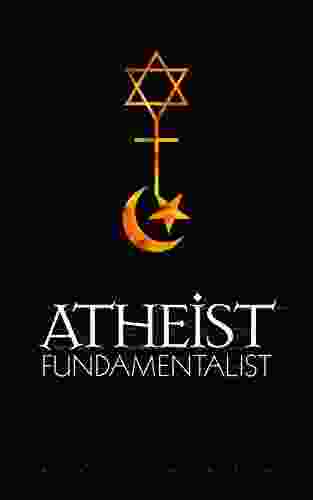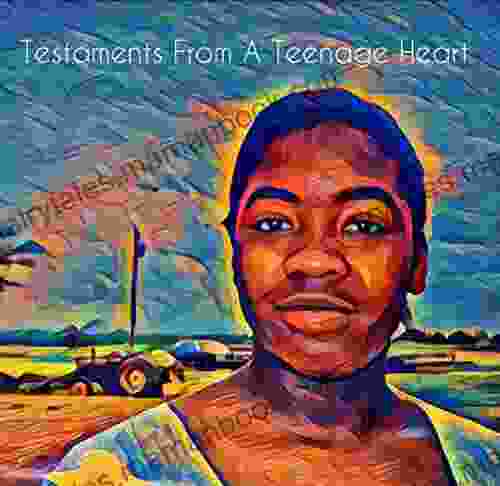A Comparative Analysis of Atheist Fundamentalism and Religious Fundamentalism: Delving into the Similarities and Differences

Fundamentalism, often characterized by an unwavering adherence to a set of beliefs, has long been associated with religion. However, in recent years, a growing movement known as atheist fundamentalism has emerged, challenging the notion that fundamentalism is solely confined to religious realms. This article aims to delve into the fascinating comparison between atheist fundamentalism and religious fundamentalism, exploring their similarities, differences, and the implications they hold.
4.5 out of 5
| Language | : | English |
| File size | : | 295 KB |
| Text-to-Speech | : | Enabled |
| Screen Reader | : | Supported |
| Enhanced typesetting | : | Enabled |
| Word Wise | : | Enabled |
| Print length | : | 19 pages |
| Lending | : | Enabled |
Defining Atheist and Religious Fundamentalism
Atheist fundamentalism, as the name suggests, is a form of atheism that adheres to a set of core beliefs and principles. These beliefs typically include the rejection of the existence of any deities, an unwavering belief in the power of reason, and a disdain for religion. Religious fundamentalism, on the other hand, is a strict adherence to a particular set of religious beliefs, often accompanied by a literal interpretation of sacred texts and a rejection of any form of religious pluralism.
Similarities
Despite their contrasting foundational beliefs, atheist fundamentalism and religious fundamentalism share some striking similarities:
1. Dogmatic Beliefs: Both atheist fundamentalists and religious fundamentalists hold their beliefs with absolute certainty, viewing them as non-negotiable truths. They often dismiss opposing views as erroneous or misguided.
2. Exclusive Outlooks: Both groups tend to see their ideologies as the only correct way of thinking. They may view those who hold different beliefs as inferior, misguided, or even immoral.
3. Opposition to Change: Fundamentalists, whether atheist or religious, are often resistant to new ideas or perspectives that challenge their core beliefs. They may view change as a threat to their established worldview.
4. Use of Appeals to Authority: Both groups frequently rely on authorities, such as prominent scientists or religious leaders, to bolster their arguments and support their beliefs.
Differences
Despite their similarities, atheist fundamentalism and religious fundamentalism also exhibit significant differences:
1. Beliefs about the Supernatural: The most fundamental difference lies in their respective beliefs about the supernatural. Atheist fundamentalists firmly reject the existence of any supernatural entities, while religious fundamentalists embrace the existence of God or gods.
2. Sources of Authority: Atheist fundamentalists typically rely on scientific evidence and rational thought as their primary sources of authority. Religious fundamentalists, on the contrary, derive their authority from sacred texts and religious teachings.
3. Attitudes towards Pluralism: Atheist fundamentalists may have varying attitudes towards religious pluralism, ranging from tolerance to rejection. Religious fundamentalists, on the other hand, often view religious diversity as a threat to their own beliefs and may actively oppose it.
4. Political Engagement: While both atheist fundamentalists and religious fundamentalists can be politically active, their motivations and goals may differ. Atheist fundamentalists may prioritize issues related to science, education, and secularism, while religious fundamentalists may focus on moral issues, religious freedom, and cultural identity.
Implications and Concerns
The emergence of atheist fundamentalism raises important questions and concerns:
1. Polarizing Discourse: Fundamentalism, in both its atheist and religious forms, can contribute to polarized discourse and societal divisions. The uncompromising attitudes and exclusive outlooks of fundamentalists can create a climate of mistrust and intolerance.
2. Suppression of Dissent: Fundamentalists of any kind may be tempted to suppress dissenting viewpoints, whether through social pressure or institutional means. This can stifle intellectual discourse and limit the free exchange of ideas.
3. Erosion of Tolerance: Fundamentalism can erode the values of tolerance and respect for diverse beliefs. When individuals view their own beliefs as inherently superior, it becomes difficult to accommodate and understand others.
4. Potential for Extremism: While not all fundamentalists engage in extremist behavior, the unwavering convictions and exclusive outlooks associated with fundamentalism can provide a fertile ground for more extreme ideologies and actions.
The comparison between atheist fundamentalism and religious fundamentalism reveals both similarities and differences. While both share certain fundamentalist characteristics, such as dogmatic beliefs, exclusive outlooks, and opposition to change, they differ in their beliefs about the supernatural, sources of authority, and attitudes towards pluralism. The rise of atheist fundamentalism highlights the complex and multifaceted nature of fundamentalism, challenging the traditional notion that it is solely confined to religious信仰. Understanding the similarities and differences between these two forms of fundamentalism is crucial for promoting constructive dialogue, fostering tolerance, and mitigating the potential risks associated with extreme ideologies.
4.5 out of 5
| Language | : | English |
| File size | : | 295 KB |
| Text-to-Speech | : | Enabled |
| Screen Reader | : | Supported |
| Enhanced typesetting | : | Enabled |
| Word Wise | : | Enabled |
| Print length | : | 19 pages |
| Lending | : | Enabled |
Do you want to contribute by writing guest posts on this blog?
Please contact us and send us a resume of previous articles that you have written.
 Top Book
Top Book Novel
Novel Fiction
Fiction Nonfiction
Nonfiction Literature
Literature Paperback
Paperback Hardcover
Hardcover E-book
E-book Audiobook
Audiobook Bestseller
Bestseller Classic
Classic Mystery
Mystery Thriller
Thriller Romance
Romance Fantasy
Fantasy Science Fiction
Science Fiction Biography
Biography Memoir
Memoir Autobiography
Autobiography Poetry
Poetry Drama
Drama Historical Fiction
Historical Fiction Self-help
Self-help Young Adult
Young Adult Childrens Books
Childrens Books Graphic Novel
Graphic Novel Anthology
Anthology Series
Series Encyclopedia
Encyclopedia Reference
Reference Guidebook
Guidebook Textbook
Textbook Workbook
Workbook Journal
Journal Diary
Diary Manuscript
Manuscript Folio
Folio Pulp Fiction
Pulp Fiction Short Stories
Short Stories Fairy Tales
Fairy Tales Fables
Fables Mythology
Mythology Philosophy
Philosophy Religion
Religion Spirituality
Spirituality Essays
Essays Critique
Critique Commentary
Commentary Glossary
Glossary Bibliography
Bibliography Index
Index Table of Contents
Table of Contents Preface
Preface Introduction
Introduction Foreword
Foreword Afterword
Afterword Appendices
Appendices Annotations
Annotations Footnotes
Footnotes Epilogue
Epilogue Prologue
Prologue Colbie Caillat
Colbie Caillat Curt Vevang
Curt Vevang Honey Jaks
Honey Jaks Namrata Patel
Namrata Patel Michelle G Stradford
Michelle G Stradford Sr Jones
Sr Jones Zapien Maxwell
Zapien Maxwell Toni Kief
Toni Kief Blake Neri
Blake Neri Oscar Wilde
Oscar Wilde Doug Lowe
Doug Lowe Mark Seal
Mark Seal Jason Kasper
Jason Kasper R M Prioleau
R M Prioleau Deborah Smith Parker
Deborah Smith Parker Anna Jackson
Anna Jackson Emma Parisi
Emma Parisi Ed Catmull
Ed Catmull Vijay Hare
Vijay Hare The Secret Midwife
The Secret Midwife
Light bulbAdvertise smarter! Our strategic ad space ensures maximum exposure. Reserve your spot today!
 Grayson BellFollow ·9.2k
Grayson BellFollow ·9.2k Jayson PowellFollow ·5.7k
Jayson PowellFollow ·5.7k Albert CamusFollow ·7k
Albert CamusFollow ·7k Jamie BlairFollow ·10.2k
Jamie BlairFollow ·10.2k Chris ColemanFollow ·5.2k
Chris ColemanFollow ·5.2k Cody RussellFollow ·8.9k
Cody RussellFollow ·8.9k Henry JamesFollow ·18.1k
Henry JamesFollow ·18.1k Patrick RothfussFollow ·19.5k
Patrick RothfussFollow ·19.5k

 Edwin Cox
Edwin CoxThe Great Deliverance Inspector Lynley: A Literary...
: In the realm of detective fiction,...

 Christian Carter
Christian CarterMetal Gear Solid Ground Zeroes Guide, Walkthrough, Tips,...
Metal Gear Solid...

 Branden Simmons
Branden SimmonsYellow Green: Not an Autobiography of Marcy Chen
Yellow Green:...

 Edward Reed
Edward ReedPurple Orchids: An Artistic Tale of Two Sisters in the...
Prologue: A Legacy Unveiled In the...

 Earl Williams
Earl WilliamsThe Evolving Housing Market Dynamics in Africa:...
The African housing market is a...

 William Faulkner
William FaulknerVoices In My Head: A Cerebral Symphony of Terror
In the labyrinthine...
4.5 out of 5
| Language | : | English |
| File size | : | 295 KB |
| Text-to-Speech | : | Enabled |
| Screen Reader | : | Supported |
| Enhanced typesetting | : | Enabled |
| Word Wise | : | Enabled |
| Print length | : | 19 pages |
| Lending | : | Enabled |












